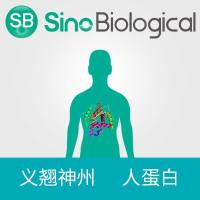Determining the Location of an Arabidopsis Chloroplast Protein Using In Vitro Import Followed by Fractionation and Alkaline Extraction
互联网
互联网
相关产品推荐

btuC/btuC蛋白/btuC; OE_2952FCobalamin import system permease protein BtuC蛋白/Recombinant Halobacterium salinarum Cobalamin import system permease protein BtuC (btuC)重组蛋白
¥69

Coronavirus Nucleocapsid重组蛋白|Recombinant SARS-CoV-2 Nucleocapsid-AVI&His recombinant Protein,Biotinylated
¥4520

Alkaline phosphatase/APLI重组蛋白|Recombinant Human Alkaline Phosphatase / ALPI Protein (His Tag)
¥1790

重组人 p38 delta / MAPK13 蛋白 (Activated in vitro, GST标签)
¥3220

Recombinant-Human-Mitochondrial-import-inner-membrane-translocase-subunit-Tim21TIMM21TIMM21; C18orf55; TIM21; HSPC154; Mitochondrial import inner membrane translocase subunit Tim21; TIM21-like protein; mitochondrial
¥10822
相关问答

